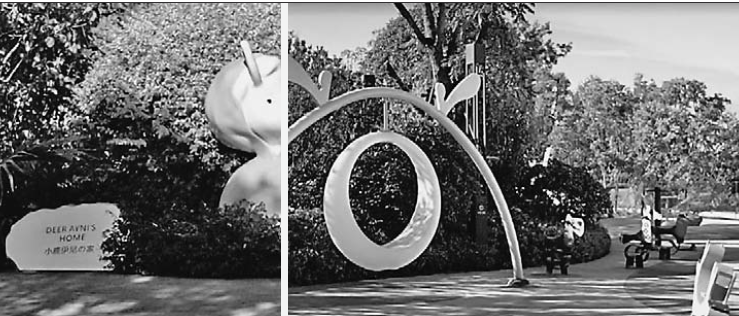Ecological Design and Public Art
Impact on the Perception of the Urban Environment
DOI:
https://doi.org/10.31522/p.32.2(68).2Keywords:
affective perception of destination image, ecological urban planning, neighborhood attachment, perceived environmental properties, public artAbstract
The study aims to evaluate the impact of a public art project within the framework of ecological urban planning on various parameters: the perception of the environment, the image of the area, and the level of neighborhood attachment among residents and visitors. The objective of the public art project was to integrate artistic design into ecological urban planning. The primary research method involved surveying local residents and visitors in the Xiangjiang New District (Changsha, China) in 2020 and 2023. A statistical analysis of the survey results revealed significant changes in the perception of certain properties of the urban environment, such as complexity, naturalness, typicality, openness, and consistency. The results also indicated that the project enhanced the overall image of the city and key aspects such as dynamism, sociability, innovation, creativity, and quality of life. These findings can facilitate the more effective integration of public art into ecological design and deepen the understanding of its impact on positive socio-cultural and environmental aspects in cities, thereby benefiting urban planners, designers, and government authorities.
References
Ardoin, N.M., and Bowers, A.W. (2020) ‘Early childhood environmental education: A systematic review of the research literature’, Educational Research Review, 31, Art.no. 100353. https://doi.org/10.1016/j.edurev.2020.100353
Askarizad, R., and Safari, H. (2020) ‘The influence of social interactions on the behavioral patterns of the people in urban spaces (case study: The pedestrian zone of Rasht Municipality Square, Iran)’, Cities, 101, Art.no. 102687. https://doi.org/10.1016/j.cities.2020.102687
Blasi, S.; Ganzaroli, A., and De Noni, I. (2022) ‘Smartening sustainable development in cities: Strengthening the theoretical linkage between smart cities and SDGs’, Sustainable Cities and Society, 80, Art.no. 103793. https://doi.org/10.1016/j.scs.2022.103793
Boffi, M.; Rainisio, N., and Inghilleri, P. (2023) ‘Nurturing cultural heritages and place attachment through street art - A longitudinal psycho-social analysis of a neighborhood renewal process’, Sustainability, 15(13), Art.no. 10437. https://doi.org/10.3390/su151310437
Bornioli, A.; Parkhurst, G., and Morgan, P.L. (2018) ‘The psychological wellbeing benefits of place engagement during walking in urban environments: A qualitative photo-elicitation study’, Health and Place, 53, pp. 228-236. https://doi.org/10.1016/j.healthplace.2018.08.018
Bowlby, J. (1988) ‘Developmental psychiatry comes of age’, The American Journal of Psychiatry, 145(1), pp. 1-10. https://doi.org/10.1176/ajp.145.1.1
Brown, B.B., and Perkins, D.D. (1992) ‘Disruptions in place attachment’. In: Altman, I. and Low, S.M. (eds.) Place attachment. Boston, MA: Springer US, pp. 279-304. https://doi.org/10.1007/978-1-4684-8753-4_13
Cameron, R.W.; Brindley, P.; Mears, M.; McEwan, K.; Ferguson, F.; Sheffield, D.; Jorgensen, A.; Riley, J.; Goodrick, J.; Ballard, L., and Richardson, M. (2020) ‘Where the wild things are! Do urban green spaces with greater avian biodiversity promote more positive emotions in humans?’, Urban Ecosystems, 23, pp. 301-317. https://doi.org/10.1007/s11252-020-00929-z
Carmona, M. (2010) ‘Contemporary public space, part two: Classification’, Journal of Urban Design, 15(2), pp. 157-173. https://doi.org/10.1080/13574801003638111
Carmona, M. (2021) Public places urban spaces: The dimensions of urban design. New York: Routledge. https://doi.org/10.4324/9781315158457
Casais, B., and Poço, T. (2023) ‘Emotional branding of a city for inciting resident and visitor place attachment’, Place Branding and Public Diplomacy, 19(1), pp. 93-102. https://doi.org/10.1057/s41254-021-00231-5
Cuffie, H.A.T. (2021) ‘Public art and the impact it has on the society’, Journal of Contemporary Indonesian Art, 7(2), pp. 98-104. https://doi.org/10.24821/jocia.v7i2.6080
Diener, E.; Suh, E.M.; Lucas, R.E., and Smith, H.L. (1999) ‘Subjective well-being: Three decades of progress’, Psychological Bulletin, 125(2), pp. 276-302. https://doi.org/10.1037/0033-2909.125.2.276
Dong, Y. (2021) ‘On the integration and application of the concept of sustainable development in environmental art design teaching’, Architectural Technology Research, 3(10), pp. 93-94.
Ebbesson, E.; Lund, J., and Smith, R.C. (2024) ‘Dynamics of sustained co-design in urban living labs‘, CoDesign. Advance online publication. https://doi.org/10.1080/15710882.2024.2303115
Falanga, R., and Nunes, M.C. (2021) ‘Tackling urban disparities through participatory culture- led urban regeneration. Insights from Lisbon’, Land Use Policy, 108, Art.no. 105478. https://doi.org/10.1016/j.landusepol.2021.105478
Florida, R. (2019) The rise of the creative class. New York City: Basic Books.
Fornara, F.; Bonaiuto, M., and Bonnes, M. (2010) ‘Cross-validation of abbreviated perceived residential environment quality (PREQ) and neighborhood attachment (NA) indicators’, Environment and Behavior, 42(2), pp. 171-196. https://doi.org/10.1177/0013916508330998
Grenni, S.; Horlings, L.G., and Soini, K. (2020) ‘Linking spatial planning and place branding strategies through cultural narratives in places’, European Planning Studies, 28(7), pp. 1355-1374. https://doi.org/10.1080/09654313.2019.1701292
Grodach, C.; Foster, N., and Murdoch, J. (2018) ‘Gentrification, displacement and the arts: Untangling the relationship between arts industries and place change’, Urban Studies, 55(4), pp. 807-825. https://doi.org/10.1177/0042098016680169
Hall, T., and Robertson, I. (2001) ‘Public art and urban regeneration: Advocacy, claims and critical debates’, Landscape Research, 26(1), pp. 5-26. https://doi.org/10.1080/01426390120024457
Huang, W. (2023) ‘Secularity and urban gentrification: A spatial analysis of downtown Buddhist temples in Shanghai’, Space and Culture, 26(2), pp. 229-241. https://doi.org/10.1177/12063312221134576
Jeronen, E. (2020) ‘Sustainable development’. In: Idowu, S. (ed.) Encyclopedia of Sustainable Management. Cham: Springer International Publishing, pp. 1-7. https://doi.org/10.1007/978-3-030-02006-4_193-1
Ji, T.; Chen, J.H.; Wei, H.H., and Su, Y.C. (2021) ‘Towards people-centric smart city development: Investigating the citizens’ preferences and perceptions about smart-city services in Taiwan’, Sustainable Cities and Society, 67, Art.no. 102691. https://doi.org/10.1016/j.scs.2020.102691
Kutty, A.A.; Abdella, G.M.; Kucukvar, M.; Onat, N.C., and Bulu, M. (2020) ‘A system thinking approach for harmonizing smart and sustainable city initiatives with United Nations sustainable development goals’, Sustainable Development, 28(5), pp. 1347-1365. https://doi.org/10.1002/sd.2088
Liang, S., and Wang, Q. (2020) ‘Cultural and creative industries and urban (re) development in China’, Journal of Planning Literature, 35(1), pp. 54-70. https://doi.org/10.1177/0885412219898290
Luo, N., Ibrahim, R., and Abidin, S.Z. (2022) ‘Transformation of children’s paintings into public art to improve public spaces and enhance people’s happiness’, International Journal of Environmental Research and Public Health, 19(24), Art.no. 16780. https://doi.org/10.3390/ijerph192416780
Mabile, T.M. (1983) ‘The social psychology of creativity: A componential conceptualization’, Journal of Personality and Social Psychology, 45(2), pp. 357-376. https://doi.org/10.1037/0022-3514.45.2.357
Macaya, A., and Valero, E. (2019) ‘Proyecto retrato social: Lo que la educación formal puede aprender del arte comunitario’, Arte, Individuo y Sociedad, 31(1), p. 165. http://dx.doi.org/10.5209/ARIS.60086
Matthews, T., and Gadaloff, S. (2022) ‘Public art for placemaking and urban renewal: Insights from three regional Australian cities’, Cities, 127, Art.no. 103747. https://doi.org/10.1016/j.cities.2022.103747
Mitschke, V.; Goller, J., and Leder, H. (2017) ‘Exploring everyday encounters with street art using a multimethod design’, Psychology of Aesthetics, Creativity, and the Arts, 11(3), pp. 276-283. https://doi.org/10.1037/aca0000131
Motoyama, Y., and Hanyu, K. (2014) ‘Does public art enrich landscapes? The effect of public art on visual properties and affective appraisals of landscapes’, Journal of Environmental Psychology, 40, pp. 14-25. https://doi.org/10.1016/j.jenvp.2014.04.008
Naheed, S., and Shooshtarian, S. (2022) ‘The role of cultural heritage in promoting urban sustainability: A brief review’, Land, 11(9), Art.no. 1508. https://doi.org/10.3390/land11091508
O’Callaghan, S. (2009) ‘Public art: Theory, practice and populism’, Visual Studies, 24(2), pp. 184-184. https://doi.org/10.1080/14725860903106245
Ode Sang, Å.; Thorpert, P., and Fransson, A. M. (2022) ‘Planning, designing, and managing green roofs and green walls for public health - an ecosystem services approach’, Frontiers in Ecology and Evolution, 10, Art.no. 804500. https://doi.org/10.3389/fevo.2022.804500
Panagopoulos, T.; Duque, J.A.G., and Dan, M.B. (2016) ‘Urban planning with respect to environmental quality and human well-being’, Environmental Pollution, 208, pp. 137-144. https://doi.org/10.1016/j.envpol.2015.07.038
Peng, M.Y.P.; Zhang, L.; Lee, M.H.; Hsu, F.Y.; Xu, Y., and He, Y. (2024) ‘The relationship between strategic human resource management, green innovation and environmental performance: A moderated-mediation model’, Humanities and Social Sciences Communications, 11(1), p. 239. https://doi.org/10.1057/s41599-024-02754-7
Putnam, R.D. (2000) Bowling alone: The collapse and revival of American community. New York City: Simon and schuster. https://doi.org/10.1145/358916.361990
Saeedi, I., and Dabbagh, E. (2021) ‘Modeling the relationships between hardscape color and user satisfaction in urban parks’, Environment, Development and Sustainability, 23, pp. 6535-6552. https://doi.org/10.1007/s10668-020-00866-z
Sharp, J.; Pollock, V., and Paddison, R. (2020) ‘Just art for a just city: Public art and social inclusion in urban regeneration’. In: Paddison, R. and Miles, R.S. (eds.) Culture- Led Urban Regeneration. New York: Routledge, pp. 156-178. https://doi.org/10.4324/9781315878768-9
Sopiana, Y., and Harahap, M.A.K. (2023) ‘Sustainable urban planning: A holistic approach to balancing environmental conservation, economic development, and social well-being’, West Science Interdisciplinary Studies, 1(2), pp. 43-53. Available at: https://wsj.westscience-press.com/index.php/wsis/article/view/87/76
Tian, Y. (2020) ‘Application of sustainable development of environmental art design in urban landscape design’, Building Materials Development Orientation, 18(6), p. 1.
Vidal, D.G.; Barros, N., and Maia, R.L. (2020) ‘Public and green spaces in the context of sustainable development’. In: Leal Filho, W. (ed.) Sustainable cities and communities. Cham: Springer International Publishing, pp. 479-487. https://doi.org/10.1007/978-3-319-95717-3_79
Xu, Q. (2018) ‘Application of sustainable development of environmental art design in urban landscape design’, Beauty and Times: City, 1, p. 2.
Zebracki, M., and De Bekker, D. (2018) ‘Public art for an inclusive city: Producers and publics on the social potentials and problems of flagship Vis‐à‐Vis community art’, City and Society, 30(1), pp. 14-44. https://doi.org/10.1111/ciso.12153
Zhao, W.; Yin, C.; Hua, T.; Meadows, M.E.; Li, Y.; Liu, Y.; Cherubini, F.; Pereira, P., and Fu, B. (2022) ‘Achieving the sustainable development goals in the post-pandemic era’, Humanities and Social Sciences Communications, 9(1), p. 258. https://doi.org/10.1057/s41599-022-01283-5
Zhou, W., and Zhang, Y. (2019) ‘The significance of cultural creative design for the sustainable development of urban landscape environmental design’, Art Grand View, 36, p. 1.
Zhu, X., and Chiou, S.C. (2022) ‘A study on the sustainable development of historic district landscapes based on place attachment among tourists: A case study of Taiping old street, Taiwan’, Sustainability, 14(18), Art.no. 11755. https://doi.org/10.3390/su141811755
Zou, M. (2019) ‘Analysis of sustainable landscape design under the concept of sustainable development’, Regional Governance, 12, p. 2.

Downloads
Published
How to Cite
Issue
Section
License
Copyright (c) 2024 Diefan Wang

This work is licensed under a Creative Commons Attribution 4.0 International License.
Copyright (c) 2021 authors and journal.
This work is licensed under a Creative Commons Attribution 4.0 International License.
Authors who publish with this journal agree to the following terms:
In agreeing this form, you certify that:
- You read the ethical codex of the PROSTOR available at journal web.
- You submitted work is your original work, and has not previously been published and does not include any form of plagiarism.
- You own copyright in the submitted work, and are therefore permitted to assign the licence to publish to PROSTOR.
- Your submitted work contains no violation of any existing copyright or other third party right or any material of an obscene, libellous or otherwise unlawful nature.
- You have obtained permission for and acknowledged the source of any illustrations, diagrams or other material included in the work of which you are not the copyright owner.
- You have taken due care to ensure the accuracy of the work, and that, to the best of your knowledge, there are no false statements made within it.
- All co-authors of this submitted work are aware of, and in agreement with, the terms of this licence and that the submitted manuscript has been approved by these authors.






